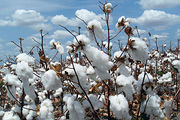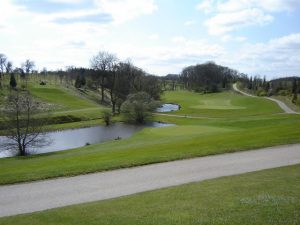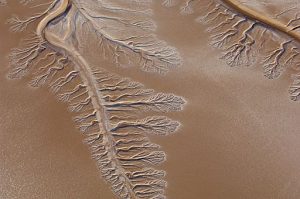Fort McMurray and the Fires of Climate Change
Fort McMurray, located in a beautiful service area with vast oil sands deposit in northeast of Alberta, is surrounded by peatlands and boreal forests of aspen and spruce. Though normally very wet, Fort McMurray is relative dry and hot in summer, and its weather is becoming more extreme because of climate change. With a low moisture content and a high volume of resin for defence against disease, stems of trees in boreal forests are highly flammable. Beginning southwest of Fort McMurray, Alberta on May 1st, 2016, the wildfire swept through forests and communities and destroyed around 2,400 buildings in only two days, resulting in over 8,000 residents to leave their homes. Ultimately, it was under control by July 5th, 2016. The fire, reported spreading cross 590,000 hectares, is the costliest disaster in Canadian history. The intense forest fire has a profound impact on local environment and ecology. About 500 species of wildlife lost their habitats or were in danger due to the fire. Many wastes such as ash and rotting food were produced in the burning process. The fire also released a large amount of CO2 and other toxic contaminants including heavy metals and PAHs deposited on trees and soils.
Ecological and Social Costs of Cotton Farming
In today’s age, cotton is one of the most versatile crops that the earth has to offer. Many of us are familiar with the usage of clothing in cotton, but cotton is also used in beauty products and food products as well. Look at the clothes that you are wearing right now, a majority; if not all of it is made out of cotton material. Cotton is favorable in clothing because of its softness, durability, and insulation characteristics. The leftover cotton seed can be used to make cottonseed oil and cotton meal. The oil can be used in cooking, such as deep frying foods or used in salads as a dressing. If not used in cooking, cottonseed oil can also be used to make tons of oil-based products such as soap, candles, or even cosmetics. Cotton meal is rich in protein and is used for human consumption or for animal fodder. These cotton products and byproducts are used by people all around the world, the amount of cotton consumed must be insane! The growth of cotton takes up approximately 2.5 percent of the world’s cultivatable land across 85 different countries. During the year of 2015 to 2016, the world consumed a staggering amount of 24.2 million metric tons of cotton. This includes uses of cotton in all its forms. However, with the good comes the bad and although cotton has a ton of benefits, it also carries many social and environmental drawbacks.
Golf Course Conservation Management
Urbanization is a trend that continues to remain consistent and dominant in our world today. Countries continue to expand infrastructure and grow industry in order to meet both global and national demands. As countries develop, rural landscapes are continually transformed into urban settings. In 1950, only 30% of the population lived in an urban setting compared to today where over half of the population resides in cities. This statistic continues to rise which sparks many questions dealing with conservation. Primarily, conservationists examine how to find new avenues of protecting the environment within the confounds of an urban setting. One possibility lies within golf courses since many urban cities have various golf courses within a close vicinity of them. While nothing overcomes the conservation value of an untouched piece of natural land, are golf courses the next best option? Being that golf courses often try to display and showcase natural beauty, do they also help conserve nature? While there is value to be found in golf courses, most of it is not actualized and remains as potential.
Suburban Golf Course
There is much debate within our society today about whether or not golf courses provide conservation value. While some articles portray golf courses as improving conservation value by creating habitat for sensitive organisms, others sources are cynical in their outlook towards the conservation value of golf courses. The naysayers suggest golf courses remove the habitat of the natural organisms, replacing it with habitat that only suits common, urbanized species. Many of these differences in opinion stem from both sides understanding about what defines ‘conservation value’ since there are various aspects that contribute to it. Many of these aspects work independently from each other; thus, it is very difficult to come up with one definition for the term ‘conservation value.’ Despite this, most sources do agree that improvement on conservation value stems from improvements in management decisions.
Cultural Keystone Places
The Colorado river delta was once a thriving and biological productive region, which spanned two million acres across Northwestern Mexico. However, by the middle of the twentieth century, the Colorado river began to be diverted and dammed for irrigation, triggering the collapse of the extensive delta ecosystem. The Colorado river spans from the Rocky Mountains in Wyoming through Western Colorado, New Mexico, Southeastern Utah, Nevada, California, and Arizona, eventually draining into the Pacific Ocean through the Gulf of California in Mexico. There are fifteen dams on the main tributary of the Colorado river. Since the 1963 construction of the Glen Canyon Dam, the last 100 miles of the river rarely reaches the ocean; resulting in a barren delta, reduced to a tenth of its former self.
Biofuels
Biofuel is the product of the refinement of plant biomass which can then be burned for heat or light energy. It is made of organic matter, either directly from plants or indirectly from domestic, industrial or commercial wastes. There are different types of biofuels. Before fossil fuels, firewood was the primary source of fuel domestically, especially for heating and cooking before the 19th century. Materials such as wood, hay, straw, and dung are collected, dried, and then burned as a fuel source. The amount of energy that a well-seasoned firewood can produce is approximately 15 MJ per kg, which is one-third to one-half of what fossil fuels can produce. Even today, nearly 2.6 billion people, primarily rural areas of developing countries, still depend on firewood as an energy source.





